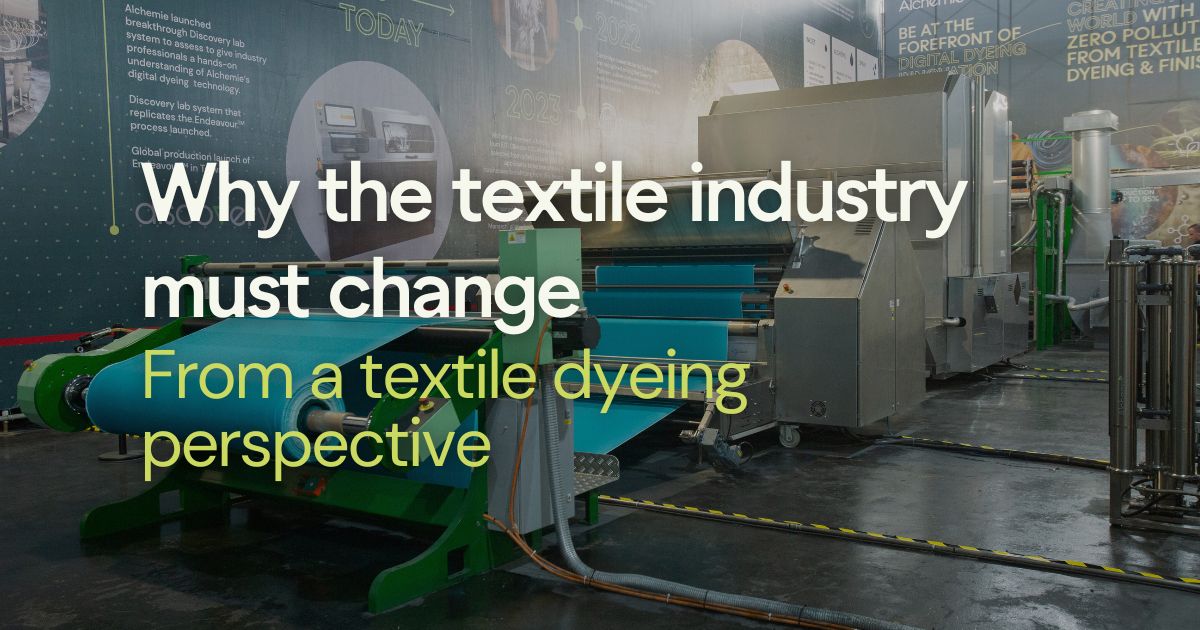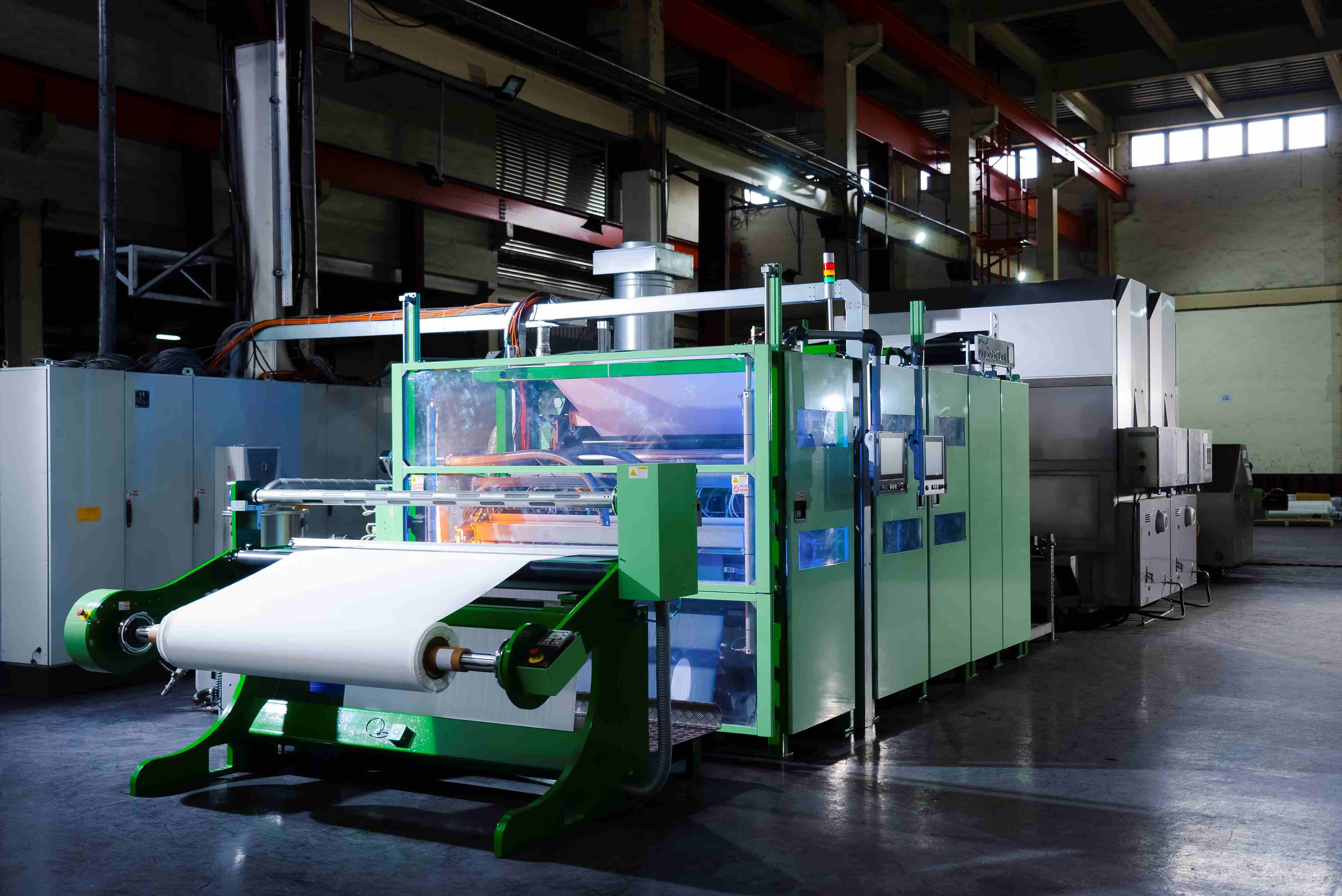 Whether it’s our clothes, shoes or fabrics at home, the textile industry has been central to global manufacturing, shaping our everyday lives. However, the textile industry has another perspective. Traditional dyeing methods are among the most resource-intensive and environmentally damaging processes in the world.
Whether it’s our clothes, shoes or fabrics at home, the textile industry has been central to global manufacturing, shaping our everyday lives. However, the textile industry has another perspective. Traditional dyeing methods are among the most resource-intensive and environmentally damaging processes in the world.
It is estimated that the global textile industry consumes about 93 billion cubic metres of water every year. Additionally, the dyeing process is responsible for 20% of global water pollution due to the chemicals and dyes used, which often end up in rivers and oceans. The textile sector is also a significant contributor to climate change, producing 1.2 billion tonnes of CO2 annually, which accounts for more than 10% of global carbon emissions. To prevent further damage to our environment and reducing climate change, the need to shift to sustainable textile manufacturing is critical.
The Environmental Impact Of Traditional Textile Dyeing
The textile industry uses an estimated 5 trillion litres of water each year to dye fabric alone. Of which, conventional textile dyeing consumes up to 150 liters of water per kilogram of fabric. This water, in traditional jet exhaust dyeing processes, is heated to temperatures up to 135 degrees Celsius, for both dyeing and washing, requiring a large amount of energy, often generated by fossil fuels to create steam. In turn, traditional textile dyeing accounts for up to 10% of global greenhouse gas emissions. If left unchecked, the textile industry will contribute 2.5 gigatons of CO2 before 2050.
Not only is pre-water treatment detrimental to the environment, but post-dyeing washing and reduction clearing processes are equally damaging. For example, untreated wastewater releases harmful chemicals contaminating ecosystems, endangering aquatic life and human health. Contributing an estimated 20% of global industrial water pollution and, for a single load of polyester clothes, adding 700,000 microplastic fibres into waterways.
Government Policies Driving The Future Of Textile Dyeing
Governments and policymakers around the world are playing a pivotal role in shaping the future of textile dyeing by introducing stricter environmental regulations. Key initiatives such as the United Nations Sustainable Development Goals (UNSDGs), the EU Textile Strategy for Sustainability, Zero Discharge of Hazardous Chemicals (ZDHC), and Extended Producer Responsibility (EPR) policies are driving the shift towards more sustainable textile manufacturing practices.
Alchemie Technology’s innovative solutions, including our Discovery and Endeavour™ systems, are designed to comply with these regulations. For the UNSDG, most notably, SDG 6 (Clean Water and Sanitation) and SDG 13 (Climate Action) by lowering energy consumption and carbon emissions. In turn, by providing an efficient, sustainable alternative to traditional dyeing, we meet SDG 12 (Responsible Consumption and Production). Enabling brands to reduce their environmental impact and embrace sustainable textile manufacturing.
Like the UNSDGs, the EU Textile Strategy for Sustainability, EPR policies, and ZDHC encourage brands and textile manufacturers to shift to more sustainable textile manufacturing processes, such as Alchemie’s Endeavour™ system. This solution reduces water usage by up to 95%, energy consumption by up to 85%, and chemical use by up to 30%, providing an immediate and scalable way to address these pressing environmental issues while aligning with global sustainability goals.
Consumers Driving Sustainable Change In The Textile Industry
By 2030, there will be 5.4 billion people in the global middle class, up from 3 billion in 2015. This population growth will drive increased demand for clothing and other goods, pushing global textile production to an estimated 145 million tonnes by 2030 if consumption continues at current rates. While some companies remain committed to the unsustainable take-make-waste model, others are embracing change by adopting innovative technologies that curb over-consumption and reduce textile waste.
Consumers are one of the driving forces to change the textile industry. Growing awareness of the environmental impact of textile dyeing is fuelling demand for sustainable products. Transparency and sustainable practices are now top priorities for modern consumers. For instance, sustainability labels like the EU Ecolabel provide consumers with clear information on a product's ecological criteria, such as efforts to reduce water, energy, and chemical pollution during textile manufacturing.
Why Digital Textile Dyeing Is The Solution
Given the significant environmental impact of traditional dyeing on ecosystems and communities, immediate action is essential. One of the most effective solutions is digital textile dyeing technologies. Digital textile dyeing is crucial for textile manufacturing efficiency because it significantly reduces energy, water, and chemical usage compared to traditional dyeing methods.
For over 10 years, Alchemie Technology has been pioneering sustainable textile manufacturing processes, using our innovative Jetronica nozzles to jet 10-micron diameter droplets of dye at high velocity onto the fabric surface. Through our digital dyeing technologies, we precisely control the application of dye droplets across our solutions, ensuring that brands and manufacturers achieve higher productivity, and reduced textile wastewater, chemical, and energy usage.
Discovery
Our lab-scale digital dyeing system uses our 10-micron droplets of dye to control 20 million drops across an A5-sized fabric, delivering unparalleled accuracy and precision for fabrics of this scale, compared to traditional lab dip processes. Ensuring hassle-free recipe-to-production, generate dye recipe libraries and enable fast colour-matching.
Endeavour™
Using our unique Jetronica nozzles, Endeavour™ is a production-scale system capable of delivering 270 million 10-micron droplets of dye per second, equivalent to 1.2 billion digitally defined droplets of dye per linear metre of fabric. Through Endeavour™, you can control where the dye is applied and the amount of dye applied to the fabric, ensuring you only use the necessary amount of dye to meet the requirements of the colour. Reducing excess and eliminating textile waste in the process.
Brands and textile manufacturers are needing to balance growing demand with sustainability initiatives. By adopting innovative technologies and sustainable digital textile dyeing methods it is not just good for the planet but also good for business. Reducing resource consumption and significantly cutting operational costs while maintaining consistent, high-quality results. With our solutions such as Discovery and Endeavour™, you will comply with current and future textile policies and lead the way to a future where fashion and sustainability weave together.